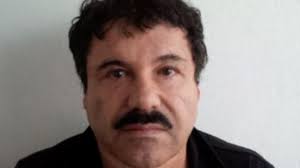El Chapo: The Rise and Fall of a Drug Lord

Introduction
Joaquín “El Chapo” Guzmán, one of the most infamous drug lords in history, has profoundly impacted the global drug trade and crime landscape. His life story serves not only as a grim reminder of the realities of organized crime but also highlights ongoing challenges in combating drug trafficking around the world. As discussions around drug policy and law enforcement strategies continue to evolve, El Chapo’s legacy remains relevant in understanding the complexities of the narcotics industry.
Rise to Power
Born in 1957 in Sinaloa, Mexico, Guzmán’s foray into the drug business began in the late 1970s when he became a protégé of Miguel Ángel Félix Gallardo, the head of the Guadalajara cartel. Through a strategic combination of bribery and violence, El Chapo took control of his own drug trafficking organization, the Sinaloa Cartel, in the late 1980s. Under his leadership, the cartel became one of the most powerful and profitable criminal organizations, exporting vast quantities of cocaine, marijuana, and methamphetamine across the United States and beyond.
Arrests and Escapes
El Chapo’s criminal enterprise faced multiple law enforcement challenges, leading to his arrest in 1993. However, he escaped from a Mexican prison in 2001, reportedly hiding in a laundry cart. His evasion of capture only solidified his infamous status. Guzmán was recaptured in 2014 but managed to escape once again in 2015 through an elaborate tunnel system. His final arrest came in January 2016, leading to a high-profile trial in New York City.
Trial and Sentencing
In 2019, after a grueling trial that exposed the inner workings of his drug empire, Guzmán was found guilty on multiple charges including drug trafficking, racketeering, and money laundering. He was sentenced to life in prison plus 30 years, along with a forfeiture order of $12.6 billion. The trial also revealed the extensive corruption within various levels of law enforcement and government, raising questions about the effectiveness of measures taken against drug trafficking.
Conclusion
El Chapo’s life serves as a significant case study in organized crime, as well as a cautionary tale for governments battling the drug crisis. While his reign has ended, the challenges posed by drug cartels are far from over. As the Sinaloa Cartel continues to operate, law enforcement agencies and policymakers must adapt their strategies to effectively combat ongoing drug trafficking issues. El Chapo’s legacy endures as a reminder of the complexities involved in the global drug trade and the need for comprehensive approaches to address these challenges.









